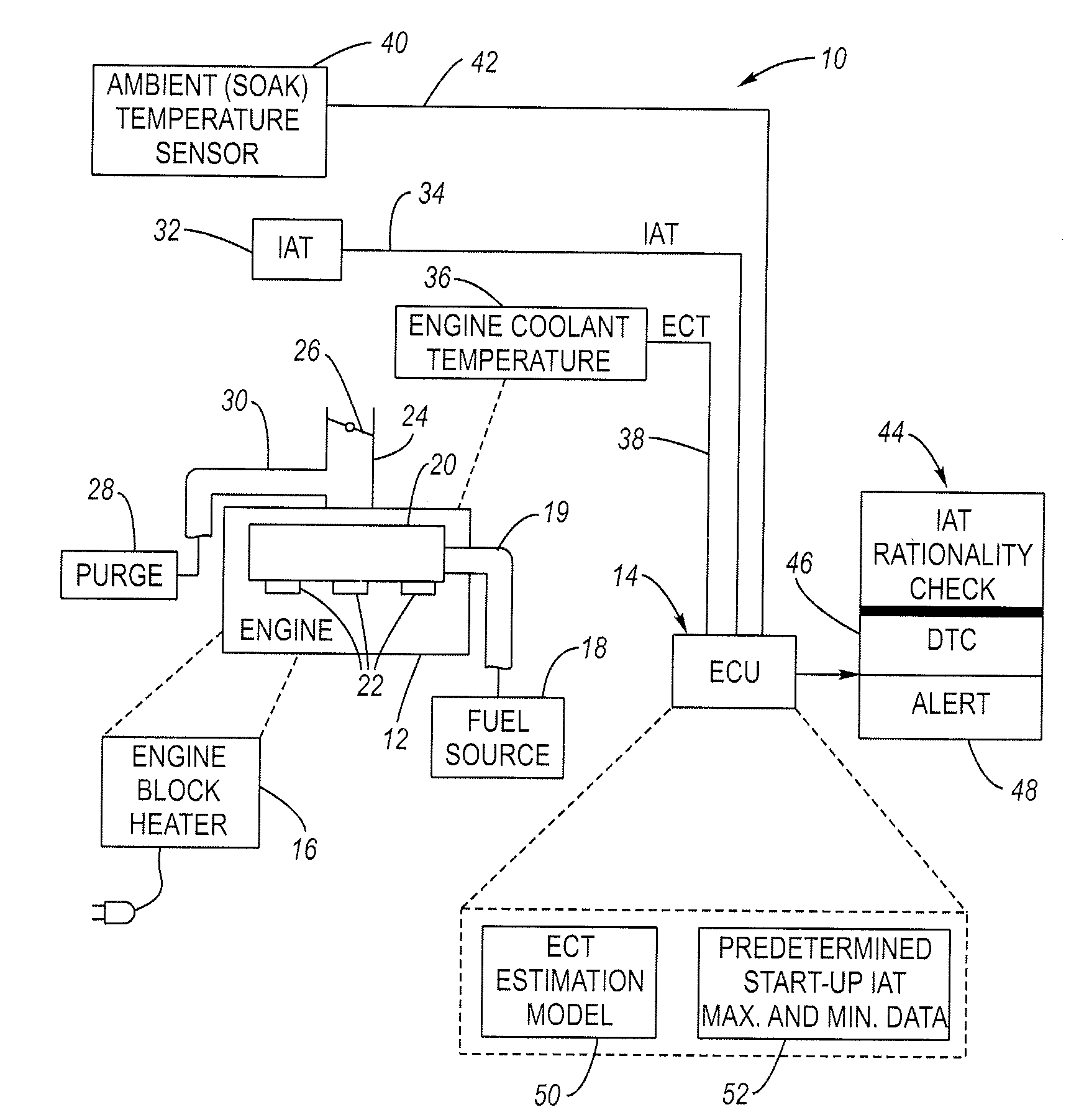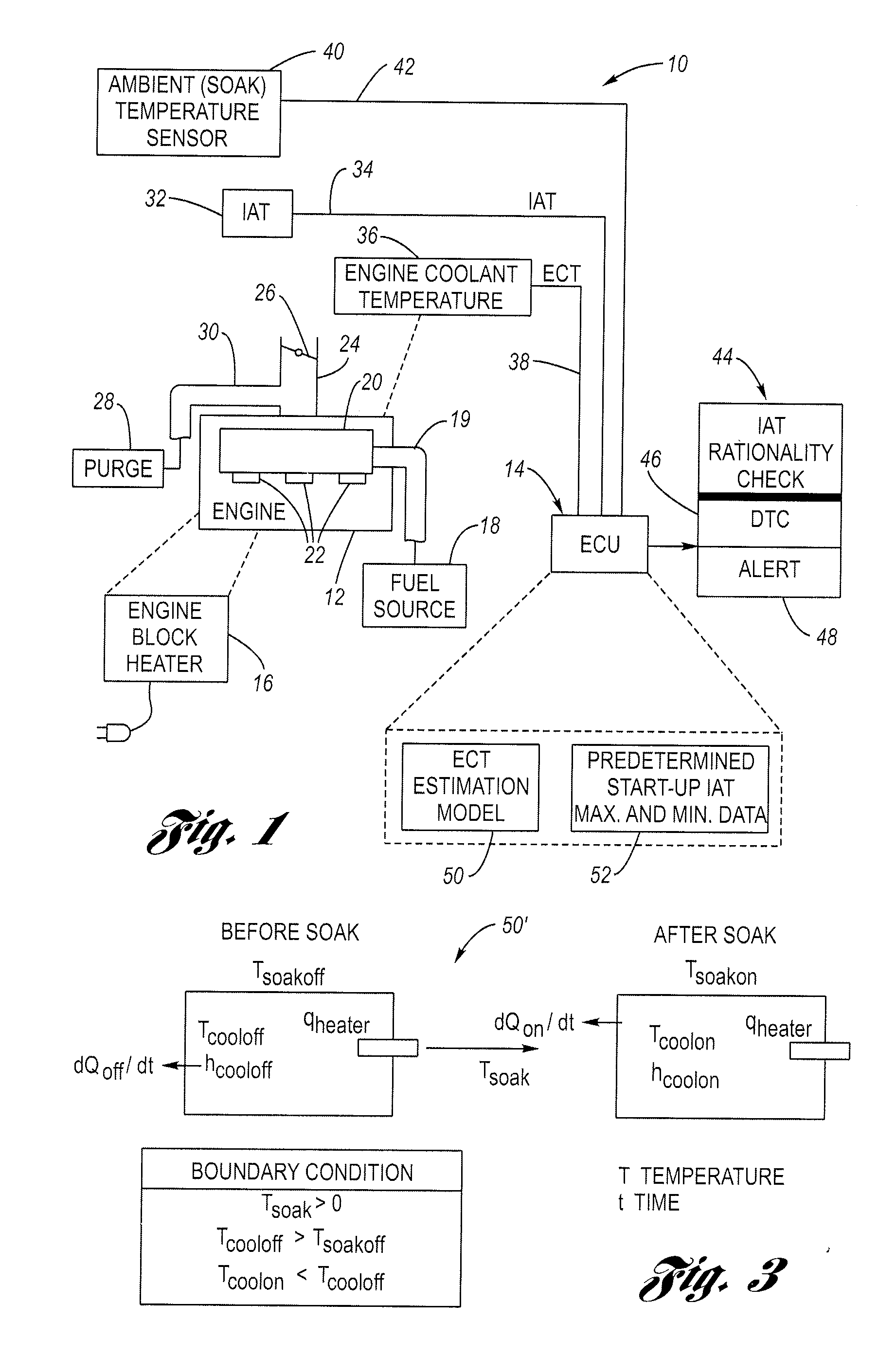Intake air temperature (IAT) rationality diagnostic with an engine block heater
a rationality and engine technology, applied in the field of vehicle diagnostics, can solve the problems of skewed iat sensor/output, failure to report, and problem, however, in the art, and achieve the effect of preventing erroneous indications and reducing or eliminating false failures
- Summary
- Abstract
- Description
- Claims
- Application Information
AI Technical Summary
Benefits of technology
Problems solved by technology
Method used
Image
Examples
first embodiment
[0056]FIG. 5 is a flowchart showing, in greater detail, the step 58 of FIG. 2 (i.e., the step of determining whether the engine block heater was operated during the soak period). As described above, in the first embodiment, a thermal dynamic model is used, and is represented by the block 50 in FIG. 1 (accessible by the logic programmed in the ECU 14). The method begins in step 96.
[0057]In step 96, the ECU 14 determines whether the vehicle “ignition” is off. Ignition off is conventionally understood to mean that the operator of the vehicle has turned the ignition key to the off position. The ECU 14, in response, attends to a variety of matters before actually shutting down the engine, including items to be described in connection with this FIG. 5. If the answer in step 96 is YES, then the method proceeds to step 98.
[0058]In step 98, the ECU 14 is configured to read and store the ambient temperature Tsoakoff and the engine coolant temperature Tcooloff. These values, as described above...
second embodiment
[0066]Some vehicle models do not have an ambient (soak) temperature sensor 40, and use only the IAT sensor 32 for air flow calculations and the like. Accordingly the invention will be described in connection with FIGS. 6-7 that does not require an ambient (soak) temperature sensor / reading.
[0067]FIG. 6 is a chart showing start-up IAT data as a function of start-up ECT values, particularly illustrating minimum and maximum start-up IAT thresholds. Over a large number of cool-down tests, it was observed that the data collected defined a specific window in which IAT values indicate that the engine block heater 16 was operated during the soak period. This was evident even over different winds speeds (e.g., 0 mph and 30 mph air speeds were used). Such a window is bounded by a trace 120 corresponding to a minimum start-up IAT threshold and a trace 122 corresponding to a maximum start-up IAT threshold. The method will first use the measured start-up ECT to identify corresponding minimum and ...
PUM
 Login to View More
Login to View More Abstract
Description
Claims
Application Information
 Login to View More
Login to View More - R&D
- Intellectual Property
- Life Sciences
- Materials
- Tech Scout
- Unparalleled Data Quality
- Higher Quality Content
- 60% Fewer Hallucinations
Browse by: Latest US Patents, China's latest patents, Technical Efficacy Thesaurus, Application Domain, Technology Topic, Popular Technical Reports.
© 2025 PatSnap. All rights reserved.Legal|Privacy policy|Modern Slavery Act Transparency Statement|Sitemap|About US| Contact US: help@patsnap.com



